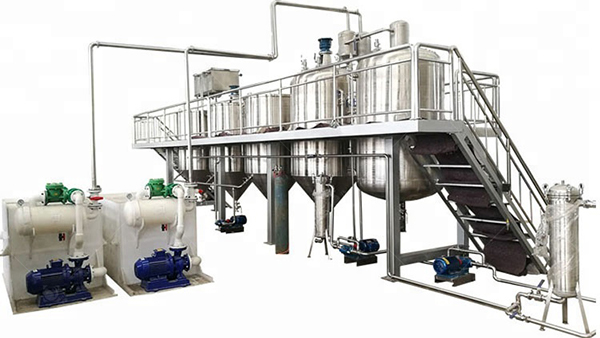
In today’s competitive edible oil market, refining efficiency isn’t just about speed—it’s about consistency, purity, and compliance with global standards. For processors seeking to upgrade from traditional batch methods to smart, integrated systems, the latest advances in soybean oil deodorization offer a clear path forward.
Deodorization is more than just removing odors—it's a critical step that determines final oil quality. According to industry benchmarks, a well-controlled deodorization process can reduce free fatty acids (FFA) by up to 98% and eliminate volatile compounds like aldehydes and ketones—key contributors to off-flavors and reduced shelf life.
| Process Step | Optimal Parameters | Impact on Oil Quality |
|---|---|---|
| Steam Injection Pressure | 0.6–0.8 MPa | Reduces residual odorants effectively without thermal degradation |
| Temperature Control | 220–240°C | Prevents oxidation while ensuring complete removal of volatiles |
| Residence Time | 30–45 min | Balances throughput with consistent flavor profile |
These parameters are not one-size-fits-all—they must be calibrated based on feedstock variability, equipment design, and end-use requirements (e.g., frying oils vs. salad oils). That’s where multi-process integration becomes essential.
Many plants still run de-gumming, neutralization, bleaching, and deodorization as separate units—an approach that increases labor costs, reduces yield, and introduces inconsistency. By contrast, modern automated systems like those developed by Qiong Group integrate these steps into a single continuous flow.
Real-world case studies show a 25% reduction in energy consumption and a 30% increase in daily output when switching from manual to semi-automated setups. One Indonesian processor reported a 95% improvement in oil clarity and a 40% drop in rework due to inconsistent deodorization—directly tied to better control over steam pressure and temperature profiles.

What sets advanced systems apart isn’t just automation—it’s intelligent feedback loops that adjust real-time variables based on sensor data. This ensures every batch meets international standards such as ISO 29170 or HACCP-compliant processes, which are increasingly non-negotiable for export markets.
Global buyers—from food manufacturers in the EU to snack brands in Southeast Asia—are demanding higher transparency, traceability, and uniformity. A single subpar batch can lead to rejection at port, loss of certification, or even long-term contract termination.
That’s why companies investing in smart deodorization aren’t just improving their operations—they’re building trust with customers who value reliability as much as price.
Ready to transform your soybean oil refining process? Explore how Qiong Group’s fully integrated, automated solutions deliver precision, consistency, and peace of mind—backed by 24/7 technical support and on-site training.
Request a Free Technical Consultation Today










